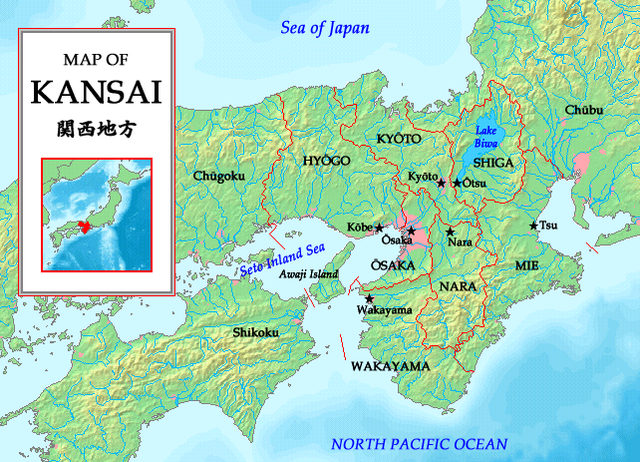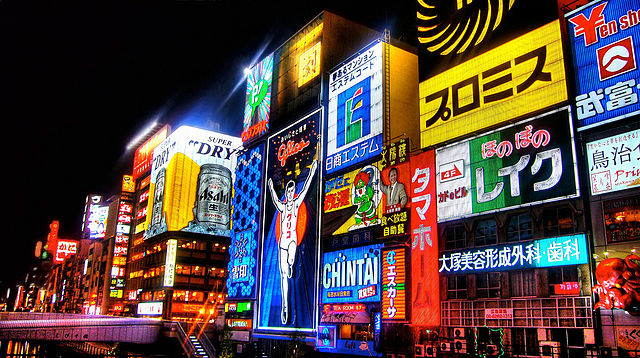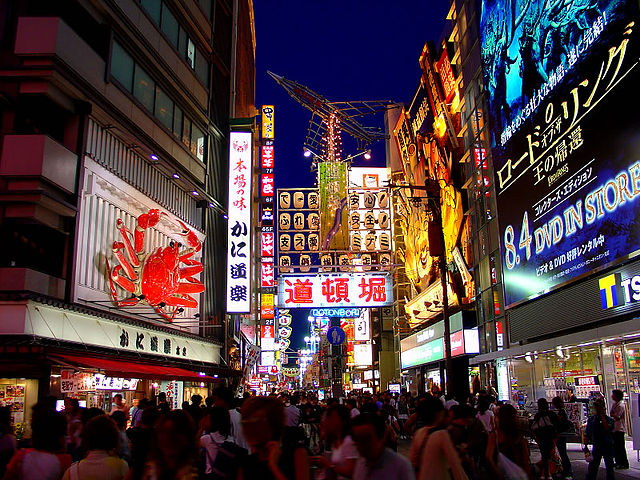Quick and Easy Introduction to Kansai Japanese
Just like many other languages around the world, Japanese has a variety of dialects spoken throughout the country. One of the most widely known and distinct is the Kansai dialect. The Kansai dialect is commonly referred to as Kansai-ben in Japanese or Kinki hōgen in technical terms. The dialect is spoken in the Kansai region in Japan, located in southern-central region of Japan’s main island of Honshu. The Kansai region includes the prefectures of Mie, Nara, Wakayama, Kyoto, Osaka, Hyōgo, and Shiga. The major urban region is Keihanshin is the second most populated region in Japan after the Greater Tokyo Area. The region’s major cities are Osaka, Kobe and Kyoto.

Photo map of Kansaivia Wikipedia
The Kansai dialect actually refers to a group of related dialects from the region and not a single dialect. Each prefecture and city has its own dialect and its citizens are proud of their particular version. The most common dialect is from the Keihanshin region, the populous urban region. This makes sense, especially after a deeper look at the history behind the dialect. The Kansai dialect began over a thousand years ago around the year 700 when Nara and Kyoto were powerful imperial cities. The Kansai dialect, then known as the Kinai dialect, was the standard Japanese at the time, used by literary greats to create the Classical Japanese language. Later dialects formed in the Edo period, like the Tokyo dialect, were formed from this early Kinai dialect.
Modern day Kansai dialect is often seen as “funny” or “comedic.” This comes from the tradition of manzai comedy created in Osaka in the Taisho period. The famous Osaka comedians helped spread the use of the Kansai dialect as a more comical dialect, often imitated in humor acts across the country.

Photo of Dotonbori via Wikipedia / JoopDorresteijn
The dialect itself is characterized as being more melodic yet harsher than modern standard language, like that spoken in Tokyo. Phonetically, it emphasizes its strong vowels and the pitch is pronounced in the initial part of the word. Often, nouns and verbs are shortened from their original form. For example, chigau (to be different or wrong) becomes chau. These shortened words are still conjugated correctly in their shortened form: chau (informal) becomes chaimasu (formal) in the same way as chigau changes to chigaimasu. Alternately, many words are just plain different than their standard Japanese counterparts. Many words are replaced with Kansai’s version, making opportunities for misunderstandings when communicating with people from other areas. For example, naosu usually means to “correct” or “repair” but in Kansai it is used as to “put away” or “put back.” A commonly used word is aho or twit/dummy which is only used in the Kansai region. It is often used as a term of endearment and is not considered as harsh as baka, idiot, in standard Japanese.

Photo of Osaka via Wikipedia / JKT-c
Here are a few typical words used in the Kansai dialect:
Aho あほ
Normally Baka ばか; stupid, idiot, silly, foolish
Akan あかん
Normally Dame だめ; not good
Annen あんねん
Normally Aru ある・あります; to have, to be, to exist, to be located, to happen, to come about
Chau ちゃう
Normally chigau ちがう; incorrect/to differ
Honmani ほんまに
Normally hontou ni ほんとうに; “really?”
Obahan おばはん
Noramlly obasan おばさん; aunt, older woman
Omae おまえ
Normally anata あなた; you
Ossan おっさん
Normally ojisan おじさん; uncle, older male
Seyakara せやから
Normally だから・ですから; so; therefore
Uttoushi うっとうしい
Normally mendokusai めんどくさい; troublesome, uninteresting
If you plan on visiting the Kansai area of Japan, locals will absolutely love if you throw in some local slang into conversations. The easiest way to pick up some Japanese before your trip is through our Japanese courses. First, take our level test if you have any Japanese background. Then you can choose the right course option for you to practice before your trip. Expect many new friends when you start using Kansai dialect Japanese!
